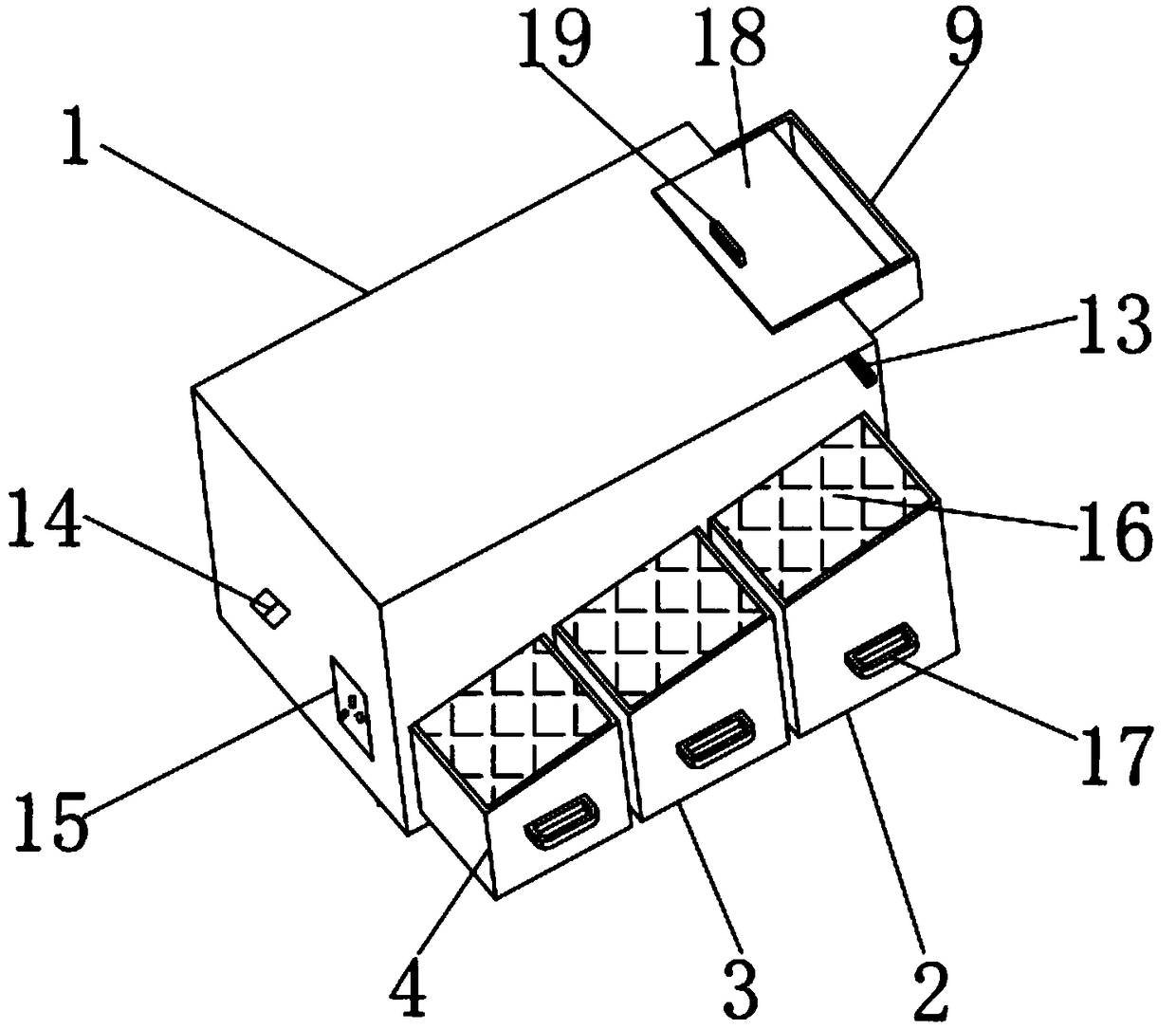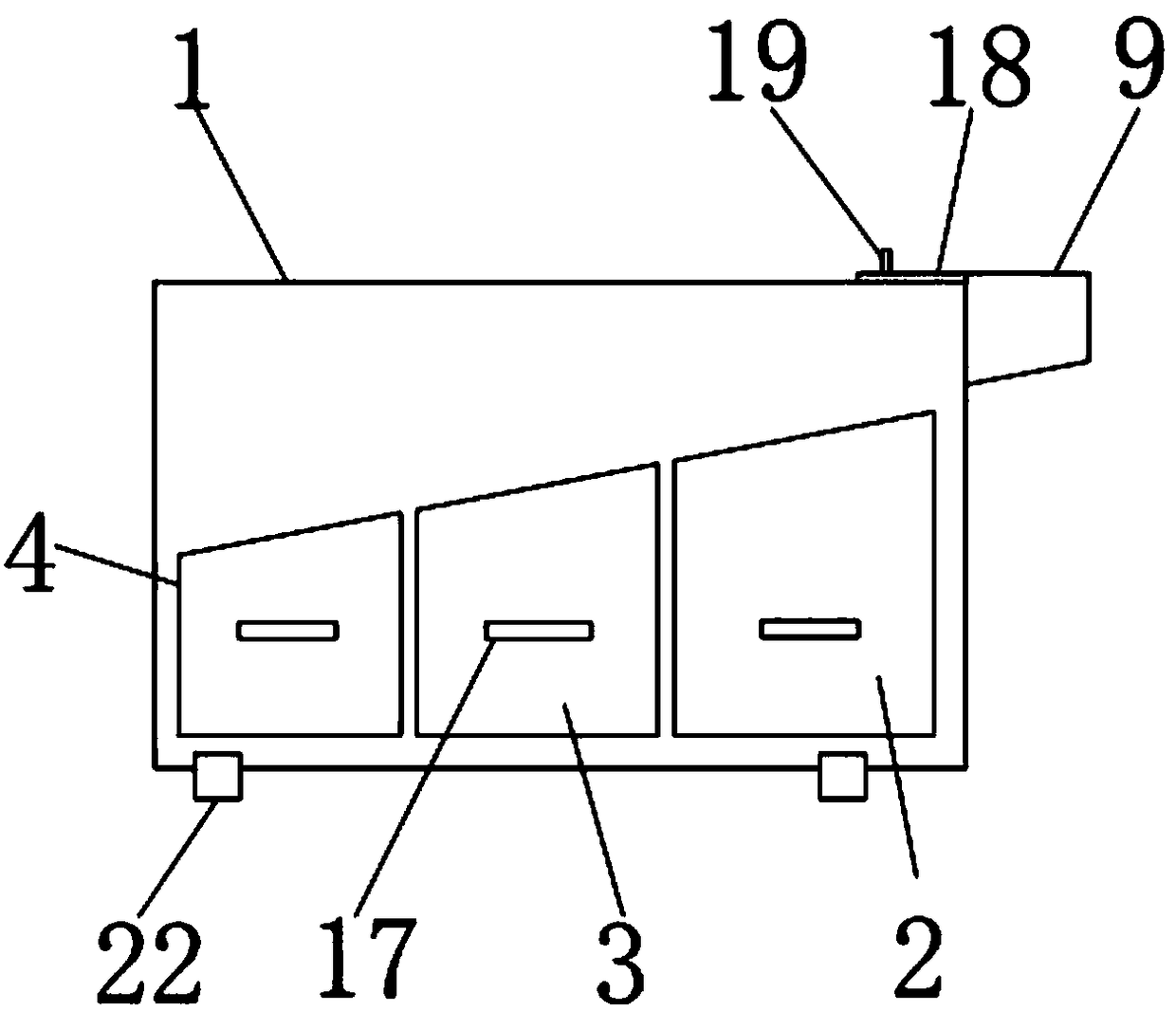Waste collection device for operating room
A technology for item collection and operating room, which is applied in the field of waste item collection devices for operating rooms, which can solve problems such as troublesome debris cleaning, cleaning personnel scratching hands, and destroying tissue integrity, so as to facilitate cleaning, improve efficiency, and save energy and endurance effects
- Summary
- Abstract
- Description
- Claims
- Application Information
AI Technical Summary
Problems solved by technology
Method used
Image
Examples
Embodiment Construction
[0026] The following will clearly and completely describe the technical solutions in the embodiments of the present invention with reference to the accompanying drawings in the embodiments of the present invention. Obviously, the described embodiments are only some, not all, embodiments of the present invention. Based on the embodiments of the present invention, all other embodiments obtained by persons of ordinary skill in the art without making creative efforts belong to the protection scope of the present invention.
[0027] see Figure 1-5, an embodiment provided by the present invention: a device for collecting waste articles in an operating room, including a housing 1, and the left and right side walls of the interior of the housing 1 are provided with germicidal lamps 13 to sterilize waste articles and prevent them from being cleaned up. To prevent cross-infection of cleaning personnel when discarding articles, and the outer wall of the housing 1 is equipped with a swit...
PUM
| Property | Measurement | Unit |
|---|---|---|
| Width | aaaaa | aaaaa |
Abstract
Description
Claims
Application Information
 Login to View More
Login to View More - R&D
- Intellectual Property
- Life Sciences
- Materials
- Tech Scout
- Unparalleled Data Quality
- Higher Quality Content
- 60% Fewer Hallucinations
Browse by: Latest US Patents, China's latest patents, Technical Efficacy Thesaurus, Application Domain, Technology Topic, Popular Technical Reports.
© 2025 PatSnap. All rights reserved.Legal|Privacy policy|Modern Slavery Act Transparency Statement|Sitemap|About US| Contact US: help@patsnap.com



